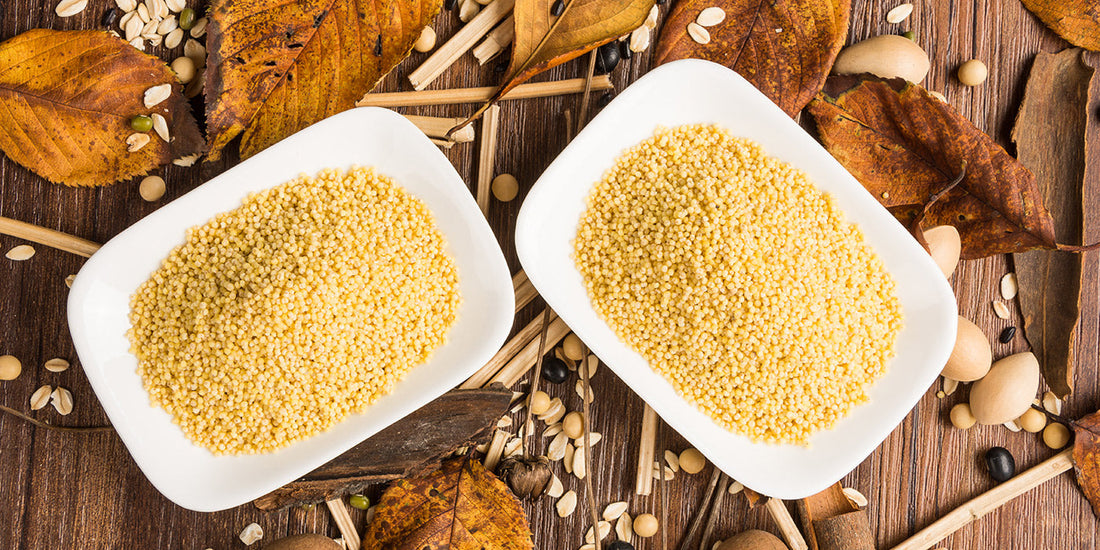
Millets in the Modern Kitchen: Bridging Tradition with Urban Lifestyles
Share
Introduction
As urban life accelerates, our dietary habits are increasingly influenced by convenience and processed foods. Yet, there’s a growing desire to return to roots—seeking nourishment that is not only healthy but also culturally meaningful. Millets, India’s ancient grains, offer a perfect balance between tradition and modern wellness. Packed with nutrition and sustainability benefits, these humble grains are making a powerful comeback in today’s urban kitchens. This article explores why and how millets deserve a place in your daily meals.
Rediscovering India's Ancient Grains
For generations, millets such as ragi (finger millet), bajra (pearl millet), and foxtail millet were staples in Indian households. However, with the rise of commercial agriculture, they were gradually overshadowed by polished rice and wheat. Today, the spotlight is back on millets, thanks to their impressive nutritional profile and eco-friendly farming practices. They are not only beneficial for health but also crucial for a more sustainable food future.
How to Incorporate Millets into Modern Urban Diets
Bringing millets back into urban kitchens is easier than you might think. With a little creativity, they can easily replace or complement your everyday grains.
Swap with Rice or Wheat
Use cooked millets in familiar dishes like pulao, khichdi, or upma. This simple switch brings variety and boosts the nutrient density of your meals.
A Wholesome Start to Your Day
Enjoy ragi dosas, millet porridge, or bajra khichdi for breakfast. These options offer long-lasting energy and are great alternatives to processed cereals.
Smarter Snacking
Choose millet-based snacks such as baked chips, granola bars, or cookies made with finger millet flour. Tasty, crunchy, and guilt-free.
Millet Flour for Everyday Cooking
Experiment with millet flours for rotis, dosas, pancakes, or even baked goods like muffins and bread. These gluten-free options cater to a wide range of dietary preferences and restrictions.
The Nutritional Edge of Millets
Millets aren’t just filling—they’re incredibly nutrient-rich and support several aspects of wellness:
Better Digestion
High in fiber and prebiotics, millets promote digestive health and nourish the gut microbiome—key for immunity, mood, and metabolism.
Naturally Gluten-Free
Perfect for those with gluten intolerance or celiac disease, millet-based flours allow for a wide variety of gluten-free recipes without compromising on taste or texture.
Rich in Antioxidants
Varieties like ragi are loaded with polyphenols and antioxidants, which help combat inflammation and may reduce the risk of lifestyle diseases, including certain cancers.
Millets in Culinary Innovation
Millets are no longer limited to traditional dishes. Chefs and home cooks alike are experimenting with fusion recipes—think millet pasta, millet risotto, or millet sushi rolls. Their versatility allows them to blend seamlessly into global cuisines, making them a great canvas for creative cooking. Embracing millets is not just a health decision—it’s a culinary adventure that expands flavor, texture, and cultural connections.
Sustainability and Social Impact
Choosing millets is also a sustainable choice. These hardy crops thrive with minimal water and don’t rely heavily on chemical fertilizers or pesticides, making them a more environmentally friendly option than rice or wheat. Supporting millets means:
- Reducing water use and carbon footprint
- Preserving traditional farming knowledge
- Boosting the livelihoods of local farmers
- Building resilient rural economies
In a time of climate crisis and environmental awareness, incorporating millets into urban diets contributes to a more responsible and resilient food system.
Conclusion
Bringing millets into urban kitchens is more than a trend—it’s a return to mindful, sustainable living. These ancient grains, with their rich history, health benefits, and culinary potential, offer urban eaters a way to reconnect with tradition while embracing modern wellness.
By making room for millets on your plate, you’re not just nourishing your body—you’re honoring cultural heritage, supporting local communities, and making a conscious choice for the planet. So next time you plan your meal, go beyond rice and wheat—choose millets and rediscover the power of tradition in a modern way.